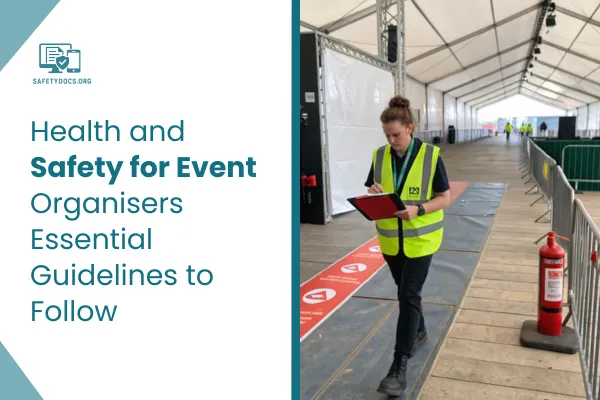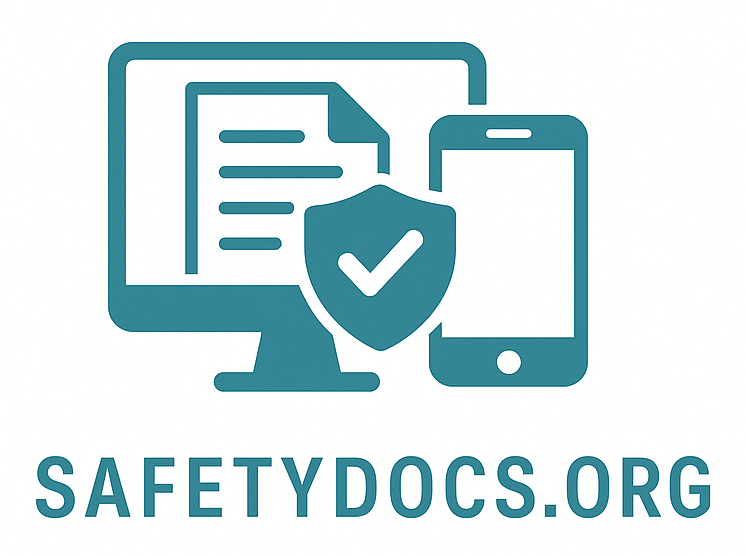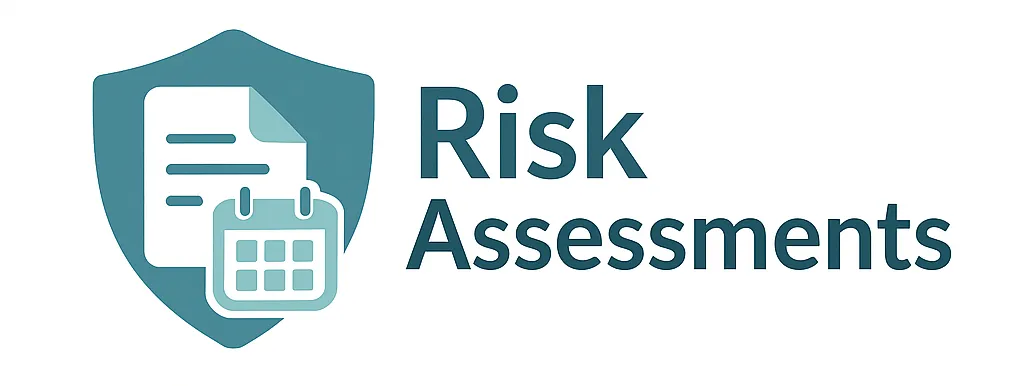
Health and Safety for Event Organisers - Key Guidelines
Health and Safety for Event Organisers: Essential Guidelines to Follow
Organising an event requires careful attention to many details, but none is more important than health and safety for event organisers. Whether the event is small or large, whether it is held indoors or outdoors, the safety of attendees, staff, and contractors is critical. A lack of proper health and safety measures can lead to accidents, injuries, legal problems, or damage to your reputation. This guide covers key points to help event organisers manage health and safety risks and run events that are both successful and secure.
The Importance of Health and Safety for Event Organisers
Events bring together large groups of people, technical equipment, temporary structures, and various activities in one space. All of these increase the chances of accidents if risks are not managed carefully. Poor planning may result in falls, crowd crushes, electrical hazards, or even food poisoning. As the organiser, it is your responsibility to protect everyone involved by identifying potential risks and implementing controls to prevent harm. Prioritising health and safety also builds confidence among attendees and staff, encouraging participation and repeat attendance.
Conducting a Thorough Risk Assessment
A key step in health and safety for event organisers is to conduct a detailed risk assessment well in advance of the event day. This means carefully examining the venue, equipment, and all planned activities to identify any potential dangers. Walk through the site to check for hazards like uneven flooring, exposed wiring, blocked exits, or slippery surfaces. Consider how the event flow and crowd movements might create risks. Create a list of all hazards and determine how to mitigate or eliminate each one. The assessment should be documented and shared with your team to keep everyone informed.
Carrying out a risk assessment is often a legal requirement. It helps you meet health and safety regulations and protects you from liability in the event of an incident. Update the evaluation as new risks arise during event setup or as conditions change.
Planning for Emergencies and First Aid
Health and safety for event organisers must include planning for emergencies. Accidents or unexpected situations can occur at any time, so having clear procedures in place is vital. Start by identifying the nearest hospitals or medical centres and keeping emergency contact numbers available at all times.
Assign trained first aiders to your event and ensure that everyone knows where the first aid stations are located. Equip these areas with the necessary supplies to handle common injuries such as cuts, burns, or fainting. Emergency plans should also cover scenarios like fires, severe weather, or crowd disturbances. Establish evacuation routes, designate safe assembly points, and communicate these plans clearly to staff and security personnel.
Testing your emergency procedures through drills before the event can enhance preparedness and help staff respond quickly and calmly in real-life situations.
Managing Crowds Safely
Crowd management is one of the biggest challenges in event health and safety. Large groups can pose risks such as overcrowding, crushing, or panic in emergencies. Proper planning can prevent these problems and ensure a safe experience.
Estimate the expected number of attendees and ensure the venue can accommodate them comfortably without congestion. Use barriers and clear signage to guide people along safe paths and prevent access to restricted areas. Employ trained security or stewards who know how to control crowds and respond to any issues promptly.
Keep communication open during the event. Use public announcements or digital signage to inform guests of any changes or updates. Monitoring the crowd continuously helps spot and address potential hazards before they escalate.
Ensuring Equipment Safety
Many events rely on technical equipment, such as sound systems, lighting rigs, cooking appliances, or temporary structures. Faulty or poorly installed equipment is a common cause of accidents and injuries. To maintain health and safety for event organisers, it is essential to carry out equipment safety checks.
Only use equipment that meets safety standards and has been tested by certified professionals. Inspect all items before and during the event to ensure they are in good working condition. Staff operating the equipment must be trained and aware of safety rules.
If your event involves the use of electrical devices, ensure that the wiring and power sources are safe, secure, and protected from weather and physical damage. Never overload circuits or use damaged cables.
Training Staff and Maintaining Clear Communication
Your event team plays a significant role in maintaining health and safety. Training staff on their responsibilities and safety procedures improves awareness and reduces risks. Before the event, hold briefings to explain safety rules, emergency plans, and reporting procedures.
Good communication throughout the event is essential. Utilise radios, phones, or other communication devices to maintain staff connectivity. Encourage workers to report hazards or incidents immediately. Clear instructions enable staff to guide attendees safely and respond promptly to emergencies.
Strong teamwork also facilitates smooth coordination among security personnel, first aiders, technical staff, and volunteers.
Food Safety and Hygiene Measures
Many events include food stalls or catering, which introduces health risks related to foodborne illnesses. Health and safety for event organisers requires enforcing strict food safety and hygiene rules.
Ensure all food vendors and handlers follow proper hygiene practices. They should wash their hands regularly, wear gloves, and use clean utensils. Food should be stored, prepared, and served at safe temperatures to prevent foodborne illness and contamination.
Regularly check food preparation areas for cleanliness and remove any waste promptly. Encourage vendors to comply with local food safety laws and obtain the necessary permits.
Providing clean drinking water and handwashing stations also helps maintain hygiene standards.
Considering Health Risks Like COVID-19
Even as restrictions have relaxed, event organisers must still consider the risks of infections such as COVID-19. Many people remain cautious, and events should offer measures to minimise health risks.
Provide hand sanitisers throughout the venue and encourage their use. If necessary, please request that guests wear masks in crowded or enclosed spaces. Increase ventilation by opening doors or windows where possible.
Follow local health authority guidelines and communicate these rules clearly to staff and attendees. Taking simple steps to reduce infection risks helps build trust and ensures the event is safe for everyone.
Insurance and Meeting Legal Requirements
Health and safety for event organisers also means securing the right insurance and complying with legal regulations. Insurance protects you from financial loss if accidents, property damage, or cancellations occur.
Check with your insurance provider about coverage specific to your event type, size, and location. Consider liability insurance to cover injuries or damages to third parties.
Additionally, research the health and safety laws applicable to your event, including permits, noise restrictions, and fire safety regulations. Non-compliance can result in fines or legal consequences.
Consult with professionals if you are unsure about requirements or how to meet them.
FAQs
1. How can event planners identify potential hazards at a venue?
Event planners should conduct a detailed walk-through of the site to identify potential risks, such as uneven surfaces, blocked exits, or faulty equipment, before the event.
2. What steps should be taken to manage large crowds safely and effectively?
Use barriers, clear signage, and trained staff to control movement and prevent overcrowding during the event.
3. Why is staff training necessary for event safety?
Trained staff know their roles and safety procedures, enabling them to respond quickly to emergencies and assist attendees effectively.
4. How should food safety be maintained at events?
Ensure all food handlers practice good hygiene, keep food at safe temperatures, and use clean equipment to avoid contamination.
5. What legal requirements must event organisers follow?
Organisers must comply with local health and safety laws, obtain the necessary permits, and secure proper insurance coverage for the event.
Conclusion
Health and safety for event organisers is a responsibility that cannot be ignored. Careful preparation, ongoing monitoring, and clear communication are necessary to protect attendees, staff, and your event. A safe event is more enjoyable, runs smoothly, and avoids costly problems.
Every organiser should make health and safety a priority from the start. Conduct risk assessments, train your team, plan for emergencies, and adhere closely to legal regulations. Keeping health and safety front and centre helps build your reputation as a reliable organiser and ensures that people continue to attend your events.

